#central asia countries
Text
Okay so one of the symbols of modern Kazakhstan's independence is Altyn Adam - Golden Man*(as in person).
Altyn adam refers to an artefact that was found 1970 in Issyk kurgan(burial)*.
It looks like this(id in the end of the post and in alt):
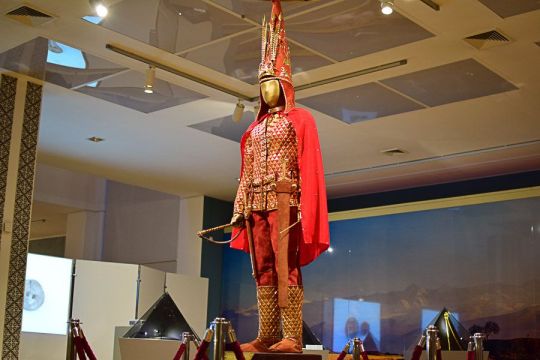
It is actually quite interesting how the artefact was found.
In 1968 the town Issyk became a town and wanted to develop. However, they needed experts to first check that there are no historical sites, which is what they did. For all of 1969 they were carefully uncovering he kurgan, and in 1970 they finally opened it.
It was empty. The place had signs that it has been robbed several times before.
One archeologist, Bekmuhanbet Nurmuhanbetov*, decided to check some 30-40 meters away, and found a side-burial which was left untouched since 6-5th century BC.
They found so many artefacts that listing them all here would be quite difficult.
What I would like to mention though is who was buried here:
Gender is unknown*, but the age is around late teens(16-18)
The person that was buried here was most likely to be a child of some kind of tribe leader, because their burial is smaller than the main one.
About the tribe! The burial probably belonged to Saka tribes. Saka people might relate to Scythians(they are probably part of the same cultural group?)* *. Anyways this particular kurgan was made by Tigraxauda people. Their name derives from persian and means. Pointy hats........
The golden armor is probably more ritualistic(haven't seen it in direct text sorry) than anything because the golden pieces of armor are wood covered in golden leaf. The helmet is made from golden plates though.
There are actually some interesting thing that are present on the helmet. By that I mean the arrows, which are said to symbolise 4 parts of the world. There are also multiple animals* on it. As a whole the costume consists of 4000 golden pieces.
And finally, Why is it so important?
Well to answer this question, you should know USSR's relationship with history and how is was teached in Kazakhstan specifically: mainly, world history through the lense of revolution and how Kazakhstan just sorta became part of USSR after it was Russian Empire's colony*. Nothing before that as people that lived on this land.
Which led to a very hard situation after the independency was gained because well. The majority of people were Kazakhs, but a lot of culture and identity was lost. And part of it was history.
So an artefact this old brings a sense of legitimacy. It also doesn't hurt that it's pretty.
ID and notes under cut
[ID: Armor on a mannequin in a museum setting standing above camera. The mannequin is wearing long-sleeved jacket which is a mix of red fabric and triangular golden pieces. The same pattern is on its boots. The pants are made from a red fabric. It is wearing a very large conical headpiece almost as tall as its chest(40cm). It is very pointy. The headpiece has 4 golden arrows and some animal ornaments on it. The figure has a bow and and an arrow in its hands, and a sheath for sword and another weapon on its belt. It is also wearing a red cape just reaching its thighs. ]
* Actually there are several artefacts like this! Around 6 or so which were found in different regions at different time. All of them are called golden men, just the place that varies. This one is Issyk's Golden Man. Some of them are actually made from solid gold and not gold leaf which I find fascinating.
* Ok so kurgan is used interchangeably here with burial. And in a way kurgan is a burial. It is also in a way like a pyramid? There are things left for the dead so they can carry them to the afterlife, but the kurgan itself is built a bit in and above ground. The rooms are made from logs, and then covered with dirt to create mounds. I also heard that a herd of horses would run it over a bunch of times to set the earth.

*Full name Bekmuhanbet Nurmuhanbetov Nurmuhanbetovich. He eventually organized a museum for the kurgans he found. He died in 2016, at the age of 81, and for some reason he has "Bekem-aĝa"(aĝa means older brother, uncle just an older friendly male figure) as his pseudonym on his Wiki.
*Actually Saka seem to had been pretty great about equality. There is also a very cool story about their female chief Tomiris.
*Historical records about nomadic people come exclusively from settled ones. Because a lot of stuff they would probably write on(despite the claims about lack of writing system) would't have survived because you know. Nomads.
*Haven't mentioned it in the post but sometimes Saka people are called ancestors of Kazakh people and uhhhh. They are probably more related to modern Europeans than to us. They still had similar lifestyle and lived on this land though. And they were more mixed than anything because you know, race is bullshit.
* Oh also fun fact one of the animals is a tulpar which is a horse with wings. The same mythical animal is present on Kazakhstan's official coat of arms.
*should I keep making these notes? because I feel they might take away from the flow of the text, and some details are simply not that important or I cannot convey them properly. so. what do you think?
#the whole legitimacy thing is of course not just kazakhstan#every country out there is doing it tp build a cohesive narrative that people can unite around#kazakhstan#kazakh#kazakh culture#kazakhstan history#kazakhstan politics#kazakh history#Kazakhstan culture#ussr#history#asia#central asia#cw: mention of death#what warnings should I put?#ussr culture#ussr education
59 notes
·
View notes
Text

Central Asia
#ZAP-NIK#i can't add a country tag because op just says 'central asia'#that's a big place#civilian#small arms#AK-47#Kalashnikov
24 notes
·
View notes
Text
The world culture day in Kaunas part 3
My home city Kaunas, Lithuania🇱🇹
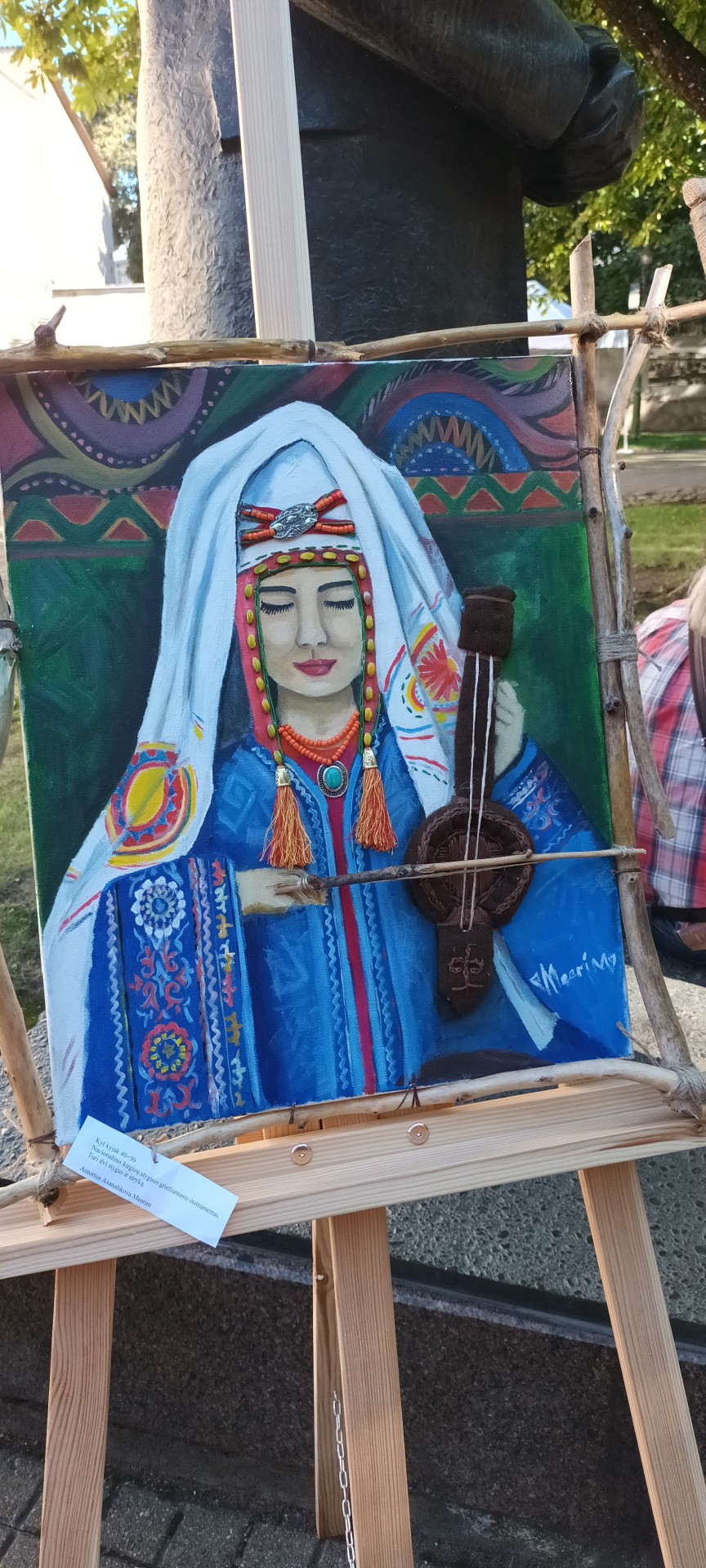


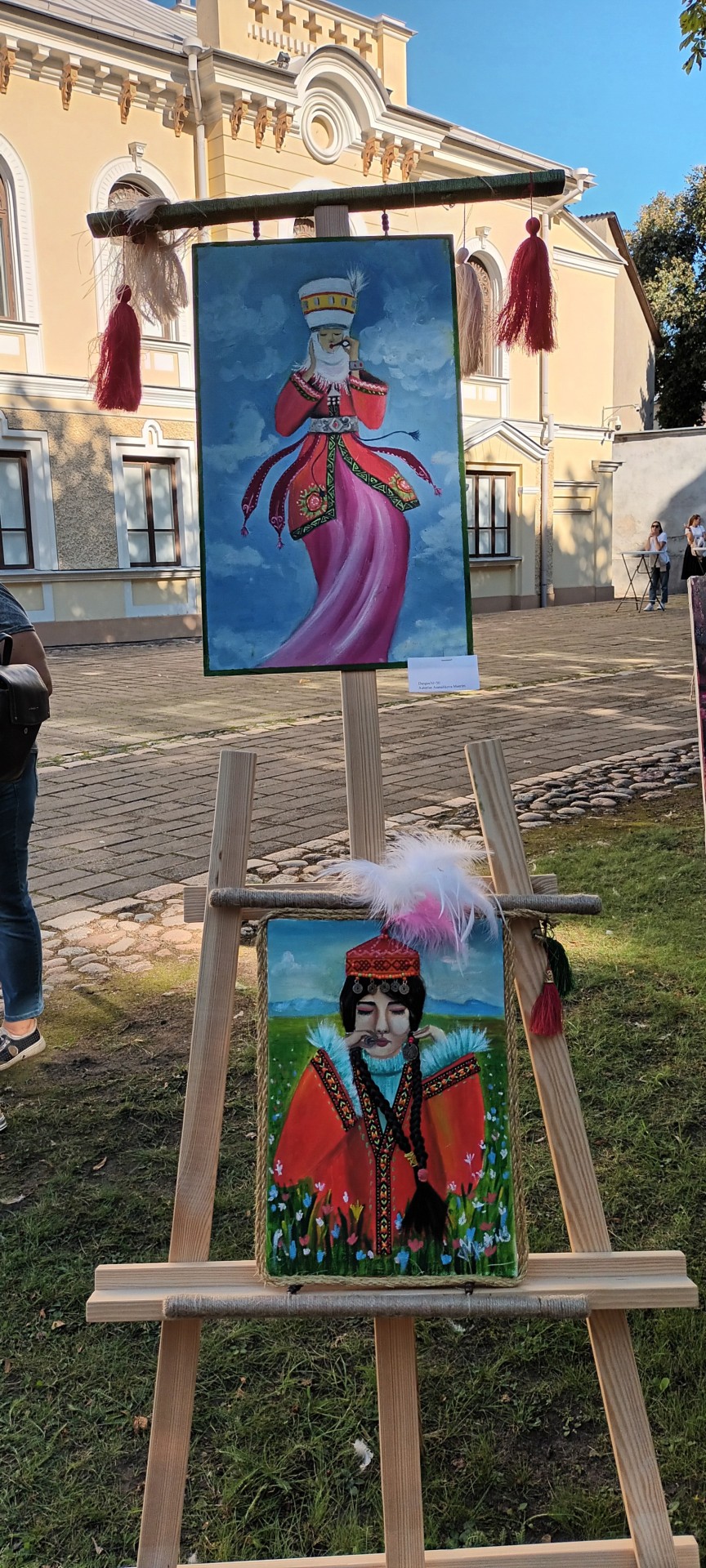
Today in Kaunas we have a world culture day
And i mostly saw Central Asian culture and Kyrgyzstany culture
#my home city kaunas#kaunas#lithuania#lithuania 🇱🇹#リトアニア#リトアニア🇱🇹#kyrgyzstan#baltic countries#baltic states#north europe#northern europe#central asia#central asian culture#lithuanian hetalian#hetalian
34 notes
·
View notes
Text
reminder that asia is. fucking massive. btw
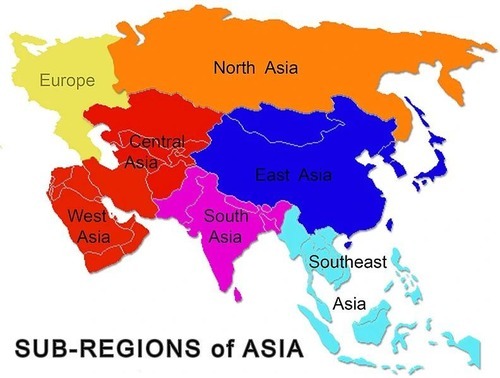
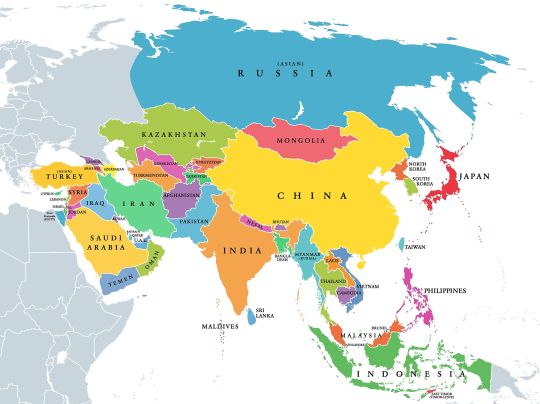
#arcana.uploads#asia.#a LOTTA ppl just. forget west asians central asians north asians south asians & southeast asians#its not just china japan & korea !! & even then china for example has MANY indigenous peoples & cultures !!#what's happening w/ palestine syria iran lebanon myanmar cambodia & china w/ the uighurs is an asian issue.#what's happening w/ antisemitism & antiromanyism is an asian issue!! bc remember they're both from asian countries !!#as well as islamophobia !!#idk i hope im making sense im v tired#but basically it's a MASSIVE continent with THOUSANDS of different peoples cultures & religions !!#+ what's happening w/ indigenous siberians & papua new guinea is an asian issue too btw !#& armenia too !#it's a Lot™
8 notes
·
View notes
Text
One day people are gonna refer to the War on Terror as the "9/11 Cinematic Universe"
#seriously the US suffers like one incident of blowback from their century of global imperialism and it instantly loses it's collective shit#and uses this mindless indignant outrage as justification to commit some of its most openly brutal and shameless atrocities in living memor#not even the smallest level of self reflection on what might make people so angry that's they'd literally kill themselves to defy the US#and so many people both in the US and its vassal states stand by this as fully justified#and it's not as if this is ancient history the conflict and devastation this spawned is still ruining countless lives to this day#and yet yankee apologists still expect sympathy for their country-as if the damage done on 9/11 and the trauma of their imperialist footsol#is even remotely comparable to the absolute horrors people all over West and Central Asia must live with even to this day#every time I hear a Yank talk about 9/11 all I can think about is how their collective reaction to it is proof#that the nation deserved to suffer far far far more
9 notes
·
View notes
Text
If you're dual citizens or parents are from different countries, please tag both. Include a cool fact about your country as well if you like. :)
(Tumblr only has ten options, so I've mostly divided the regions into Western/ non-Western.)
#usamericans are going to put their states instead of country in the tags and take years off all our lives‚ I know it#tumblr polls#tumblr culture#polls#world regions#cultures#diversity#knee of huss#asia#south asia#east asia#southeast asia#latin america#south america#central america#caribbean#oceania#aotearoa#australia#uk#europe#eastern europe#africa#middle east#north africa#west africa#east africa#central africa
17 notes
·
View notes
Text
I didn't expect to see "about 85% of all white people are Rh positive" in my lecture. ://
#what does it mean#there is no race as white people#does it mean Negroid Australoid and even Mongoloid races fit in this category? because they can be white sometimes but mostly they are not#im so tired of this racist shit#In Ukrainian culture words 'black' or 'white' are slurs#we usually say 'probably from X country/part of the world' e.g. Central Asia#but it's better to ask from which country is that person#also Afro-American is not a slur word and I don't know from which the idea of being it came#wouldn't it be more offensive to say just American if ancestors of that person were slaves?#in Ukraine calling a person 'black' or 'white' is extremely racist because we're like doing an accent on person's skin#it's the same as calling Asians 'yellow' or Native Americans 'red'#this is why i always feel cringe when seeing 'black' or 'white' in a positive context#However 'black-skined' or 'brown-skined' and so on - are not slurs for me as an artist#it's like stating a fact e.g. 'blonde' or 'with dark eyes'#calling a person чорно- or темношкірий/а is not offensive BUT чорний/а or темний/а is#also in Ukrainian culture calling a person 'black' sometimes can mean the same as 'dark' - and it literally means evil#for example Kenjaku would be called чорна людина which is translated as 'black person' - and it means#a person who brought or can bring a lot of grief#and біла or бліда людина is often used to describe connection with evil forces as well#'he is so white he's probably упир (a vampire (in the worst meaning))
6 notes
·
View notes
Text
My european family worships the roman empire and im like, how do i tell them the romans were not... good
#they live in a backwater tiny ass country thats major life philosophy is that nothing should ever change#and dont understand that the rest of the world is on fire#they also like to tell me im wrong about the us and im like excuse me did YOU spend most of your life there?#sorry but i have a better understanding of our home country and its situation and how similar it is to most everywhere else in the world#where you live is an exception literally yall sit on a pile of the wealth of eastern eurupe and middle asia your govt plundered#through imperialism then later archeology#the rest of the world is all the same its yall who are freaks#(i fucking hate central europe good god its miserable there)
4 notes
·
View notes
Text
The state of the american education system is truly abysmal if my almost 13 year old niece doesn't know where South America is
#literally still absolutely appalled by this#also referred to asia as one massive country#and i had to sit there and like literally pull out a map akskskskskssk#also said central america was cuba SCREAM LIKE DUDE WTF
6 notes
·
View notes
Text
CEO Conference - Winning the Uncertain Felul in care liderii se vor mobiliza pentru a face fata contextului global disruptiv si pentru a capitaliza momentul prezent este ceea ce le va asigura business-urile pe termen lung
CEO Conference – Winning the Uncertain Felul in care liderii se vor mobiliza pentru a face fata contextului global disruptiv si pentru a capitaliza momentul prezent este ceea ce le va asigura business-urile pe termen lung
Pe 26 mai 2022, CEO Conference – Winning the Uncertain va reuni la Bucuresti CEO, directori generali, investitori si antreprenori, pentru a discuta despre una dintre cele mai mari provocari la care liderii trebuie sa faca fata astazi: aceea de a-si reseta viziunea si a-si regandi strategiile pentru a se adapta la noul context complet disruptiv.
Conferinta face parte din seriile de evenimente…
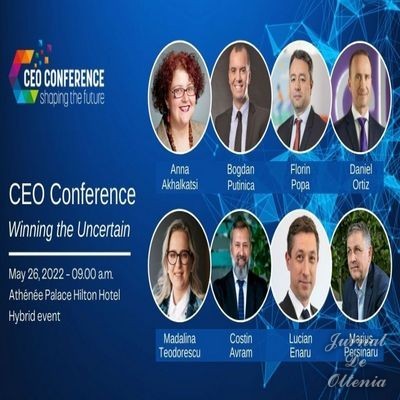
View On WordPress
#Anna Akhalkatsi#Antreprenor & Consultant Strategic si Organizational#antreprenori#CEO#CEO Conference#CEO Conference – Winning the Uncertain#Channel Advisors - CEO#Country General Manager Romania & Moldova#Country Manager for Romania and Hungary#Crystal System#Director B2B#Director General#directori generali#Doingbusiness.ro#Enel X Romania; Costin Avram#Europe and Central Asia#General Manager#investitori#Managing Partner#Marius Persinaru#Microsoft Romania; Florin Popa#Orange Business Services; Lucian Enaru#Schneider Electric; Daniel Ortiz#The CEO Moment – leadership in vremuri incerte#Winning the Uncertain#World Bank; Bogdan Putinica
4 notes
·
View notes
Text
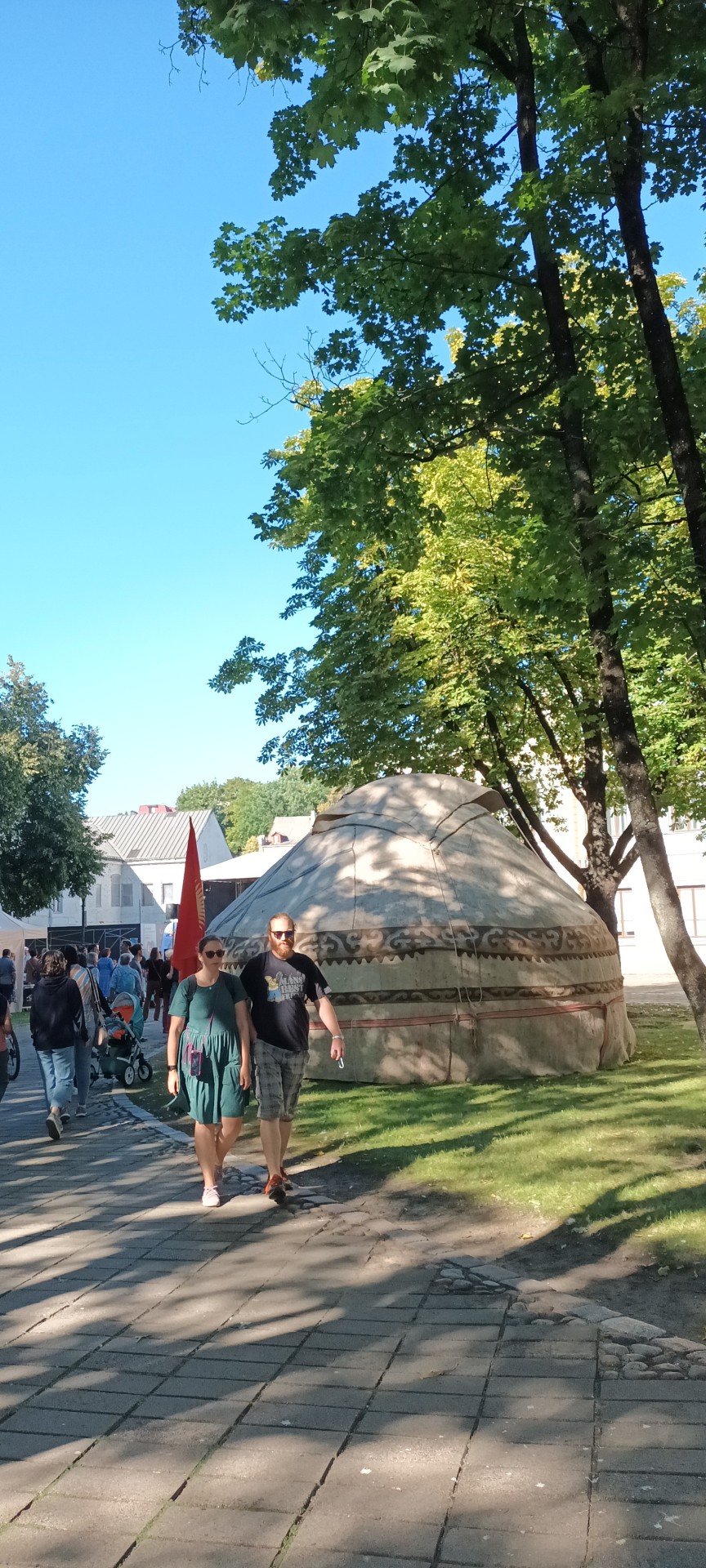
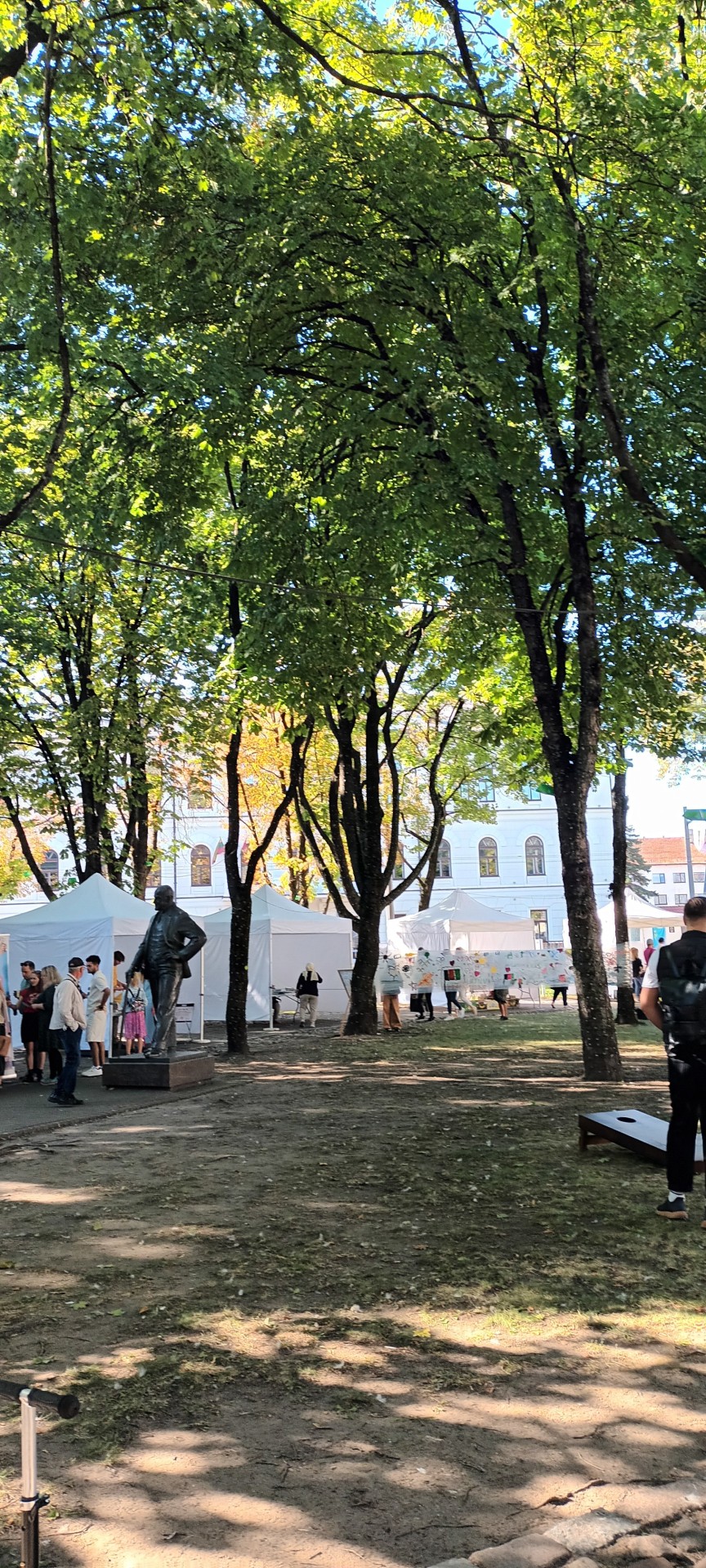
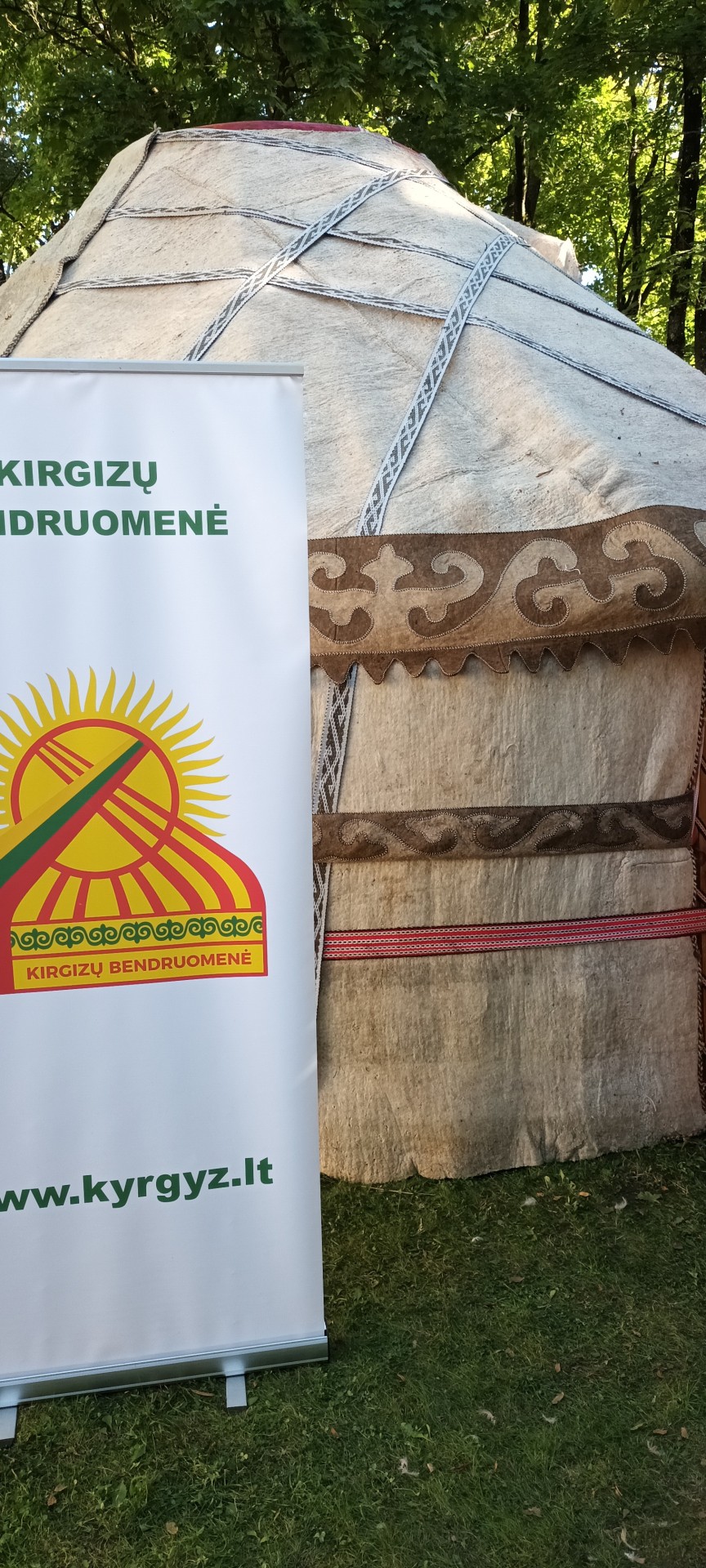

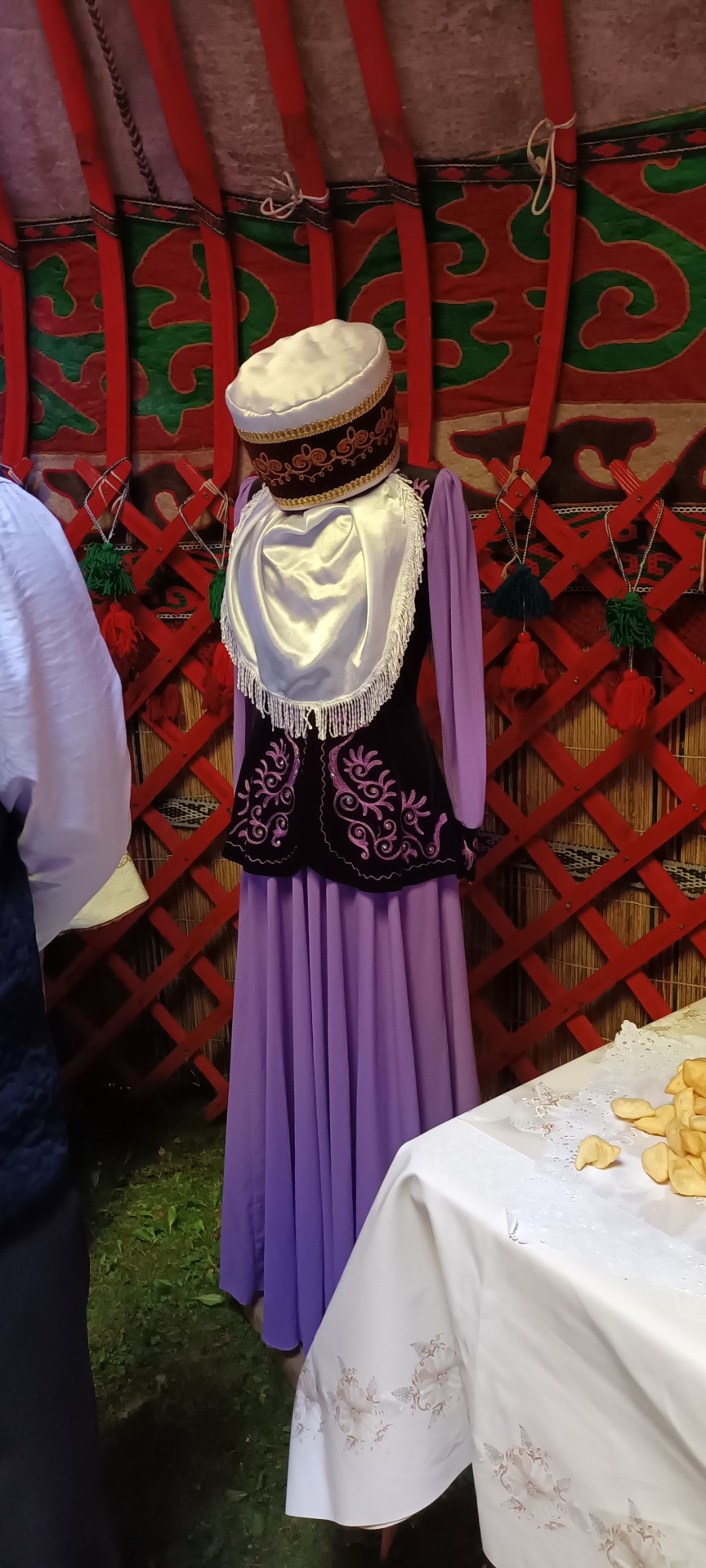


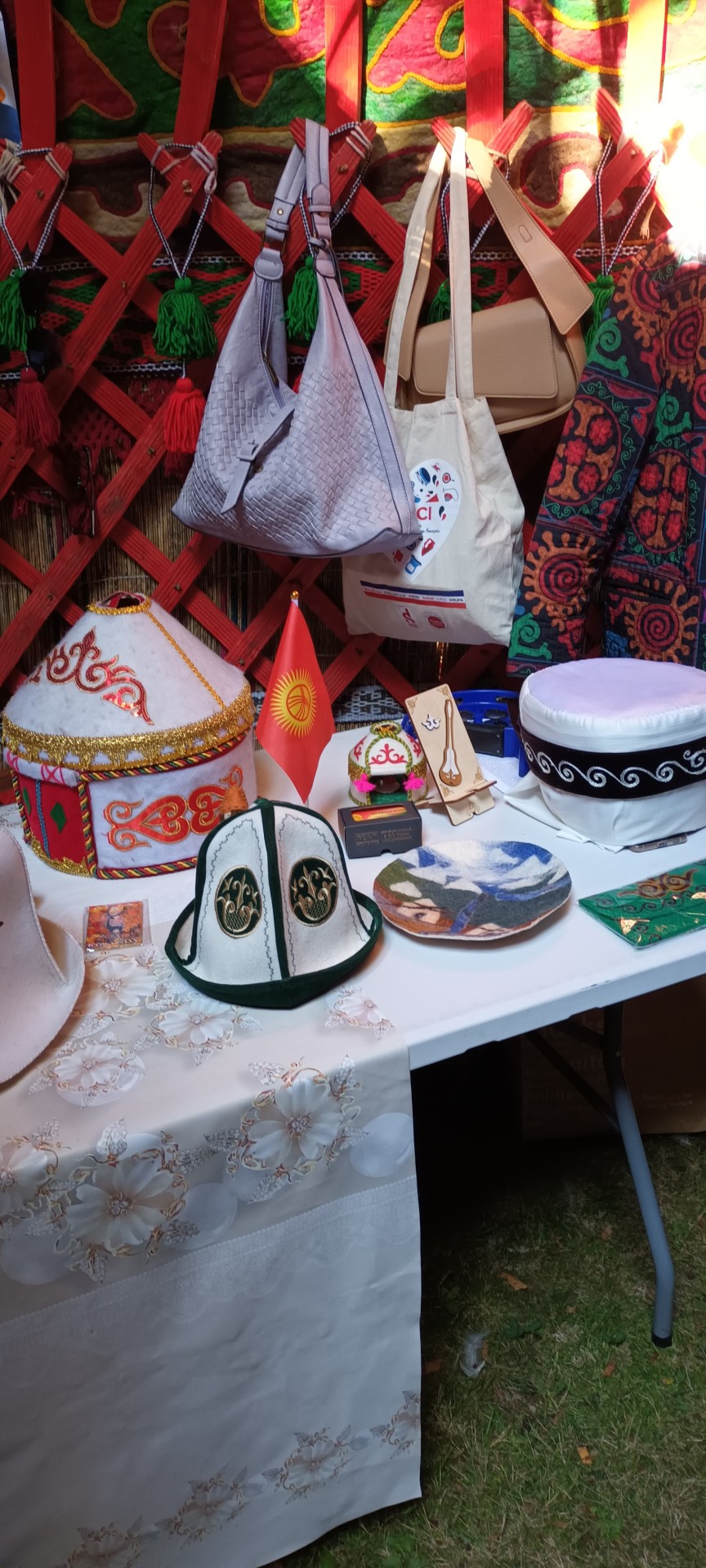
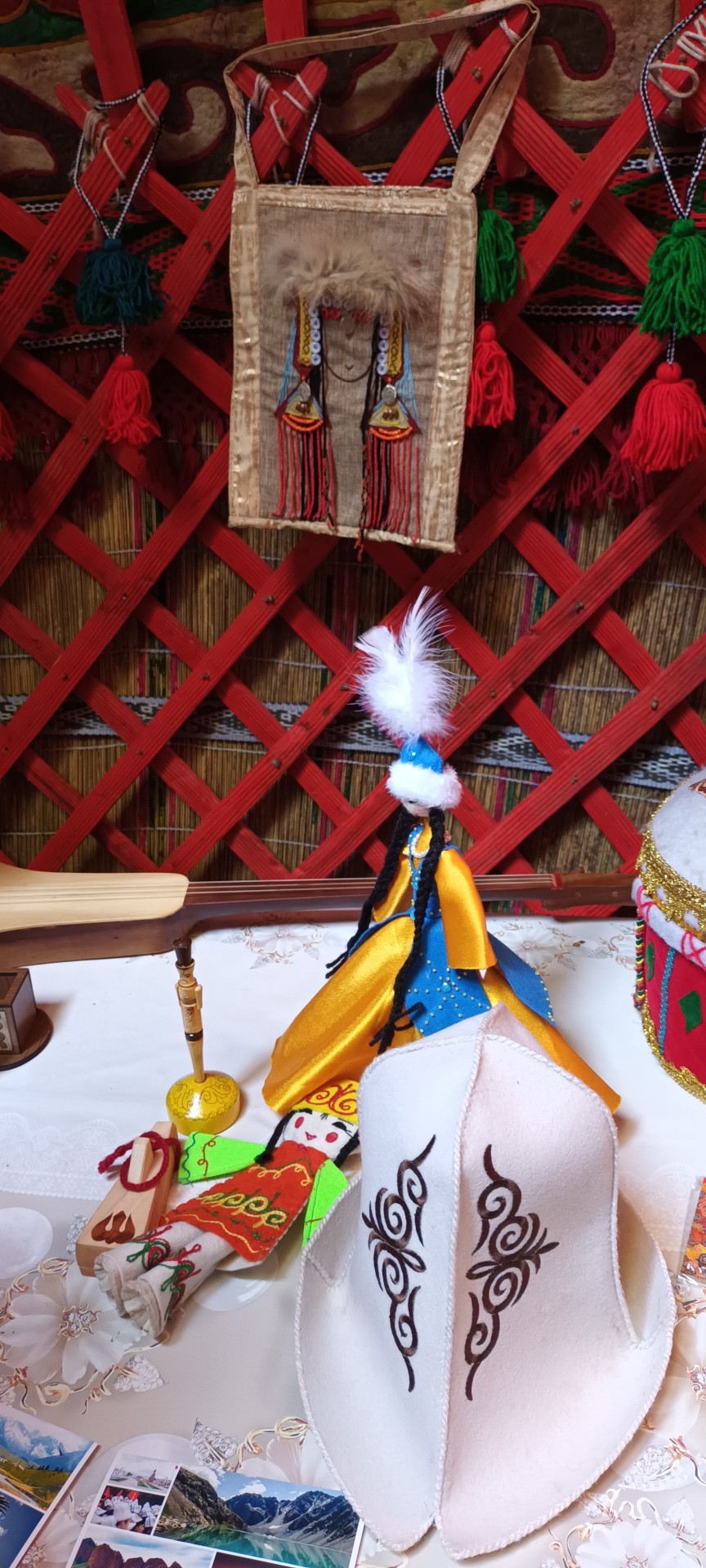
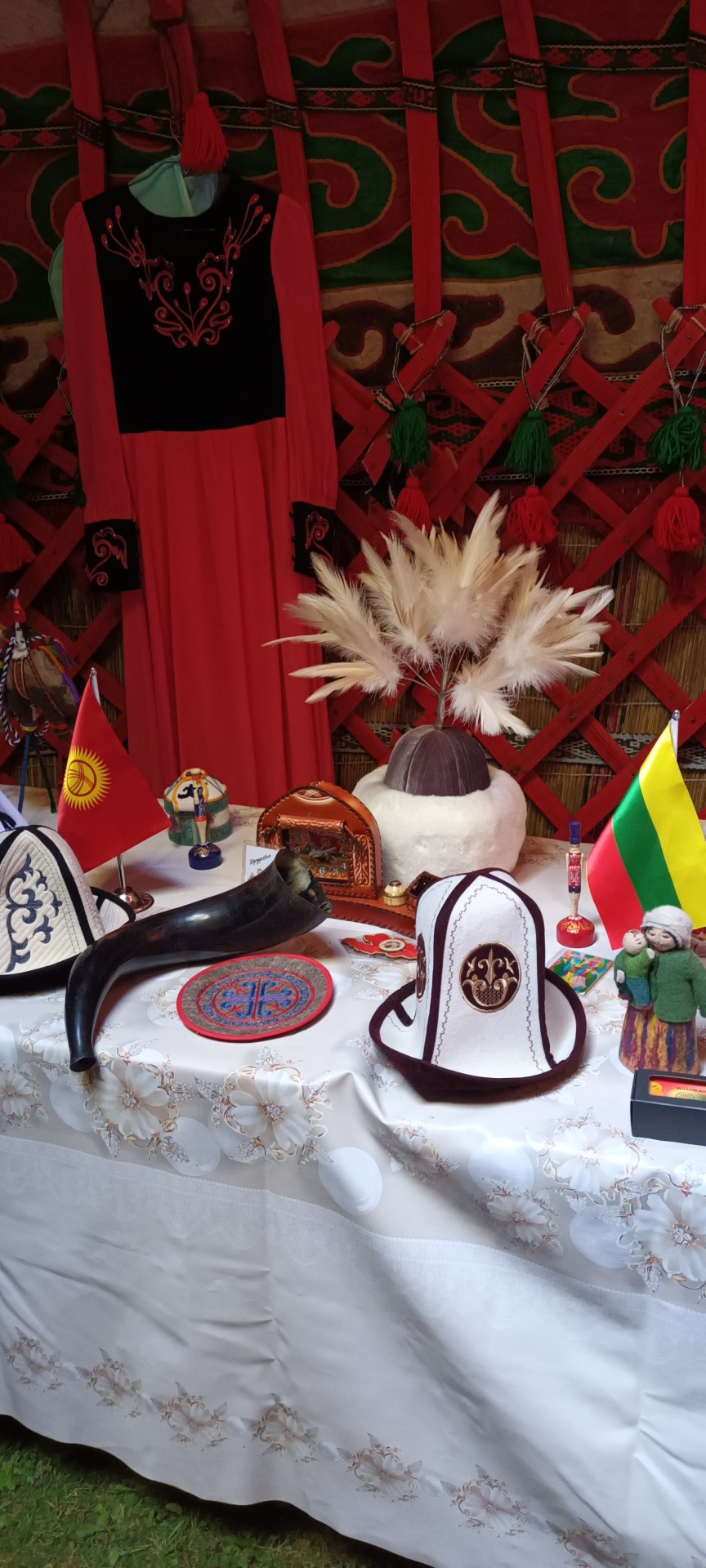
Today in Kaunas we have a world culture day
And i mostly saw Central Asian culture and Kyrgyzstany culture
My home city Kaunas, Lithuania🇱🇹
#my home city kaunas#kaunas#lithuania#lithuania 🇱🇹#kyrgyzstan#リトアニア#リトアニア🇱🇹#baltic countries#baltic states#north europe#northern europe#central asia#lithuanian hetalian#hetalian
32 notes
·
View notes
Text
TOP 17 CHEAPEST Countries to Travel in 2023!
TOP 17 CHEAPEST Countries to travel in 2022 Traveling the world doesn’t have to be expensive; it can be cheap!
source

View On WordPress
#abroad#Africa#antigua#asia#backpacking#beaches#best travel destinations in the world#Bolivia#budget travel#cambodia#cancun#central america#cheap#cheap travel destinations#cities#Colombia#costa rica#countries#digital nomad#dollars#europe#expedia#Expensive#flights#Guatemala#Himalayas#hostel#hotel#India#live abroad
0 notes
Text
I'm not American, but grew up in a country that is REALLY used to centering American opinions. I'd love to see how many people here are actually American, and how many are just accepting of a lot of American content.
Boundaries are fake, so most places show up at least twice. Choose the grouping that you connect with more.
15K notes
·
View notes
Text
Unknown Uzbekistan
Even for those that consider themselves well traveled, there are plenty of spots on the globe that still feel mysterious or unknown. For us, the country of Uzbekistan fits that criteria. It’s not often in the news, it doesn’t feel top-of-mind from a cultural standpoint, and we probably couldn’t point it out on a map without some research.
However, learning about these ‘unknown’ places is always…
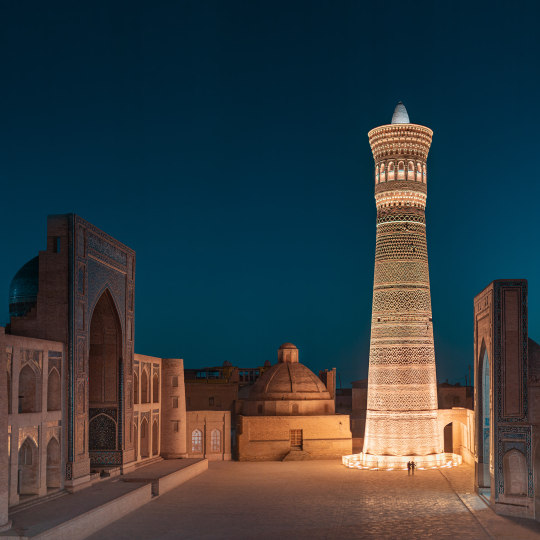
View On WordPress
0 notes
Text
We ask your questions so you don’t have to! Submit your questions to have them posted anonymously as polls.
#polls#incognito polls#anonymous#tumblr polls#tumblr users#questions#polls about school#submitted dec 21#polls about the world#geography#flags
1K notes
·
View notes
Text
The Spanish surnames of many Filipinos have often misled foreigners here and abroad, who are unaware of the decree on the adoption of surnames issued by Governor-General Narciso Clavería in 1849. Until quite recently in the United States, the Filipinos were classified in demographic statistics as a “Spanish-speaking minority,” along with Puerto Ricans, Cubans, Mexicans, and other nationals of the Central or South American republics. The Philippines, as is well known, was a Spanish colony when Spain was mistress of empires in the Western Hemisphere; but the Americans were “hispanized” demographically, culturally, and linguistically, in a way the Philippines never was. Yet the Spanish surnames of the Filipinos today—García, Gómez, Gutiérrez, Fernández—seem to confirm the impression of the American statistician, as well as of the American tourist, that the Philippines is just another Mexico in Asia. Nor is this misunderstanding confined to the United States; most Spaniards still tend to think of “las Islas Filipinas” as a country united to them through the language of Cervantes, and they catalogue Philippine studies under “Hispano-America.” The fact is that after nearly three-and-a-half centuries of Spanish rule probably not more than one Filipino in ten spoke Spanish, and today scarcely one in fifty does. Still the illusion lives on, thanks in large part to these surnames, which apparently reflect descent from ancient Peninsular forbears, but in reality often date back no farther than this decree of 1849.
Somehow overlooked, this decree, with the Catálogo Alfabético de Apellidos which accompanied it, accounts for another curiousity which often intrigues both Filipinos and foreign visitors alike, namely, that there are towns in which all the surnames of the people begin with the same letter. This is easily verifiable today in many parts of the country. For example, in the Bikol region, the entire alphabet is laid out like a garland over the provinces of Albay, Sorsogon, and Catanduanes which in 1849 belonged to the single jurisdiction of Albay. Beginning with A at the provincial capital, the letters B and C mark the towns along the coast beyond Tabaco to Tiwi. We return and trace along the coast of Sorsogon the letters E to L; then starting down the Iraya Valley at Daraga with M, we stop with S to Polangui and Libon, and finish the alphabet with a quick tour around the island of Catan-duanes. Today’s lists of municipal officials, memorials to local heroes, even business or telephone directories, also show that towns where family names begin with a single letter are not uncommon. In as, for example, the letter R is so prevalent that besides the Roas, Reburianos, Rebajantes, etc., some claim with tongue in cheek that the town also produced Romuáldez, Rizal, and Roosevelt!
Excerpt from the 1973 introduction to Catálogo de Alfabético de Apellidos by Domingo Abella
1K notes
·
View notes